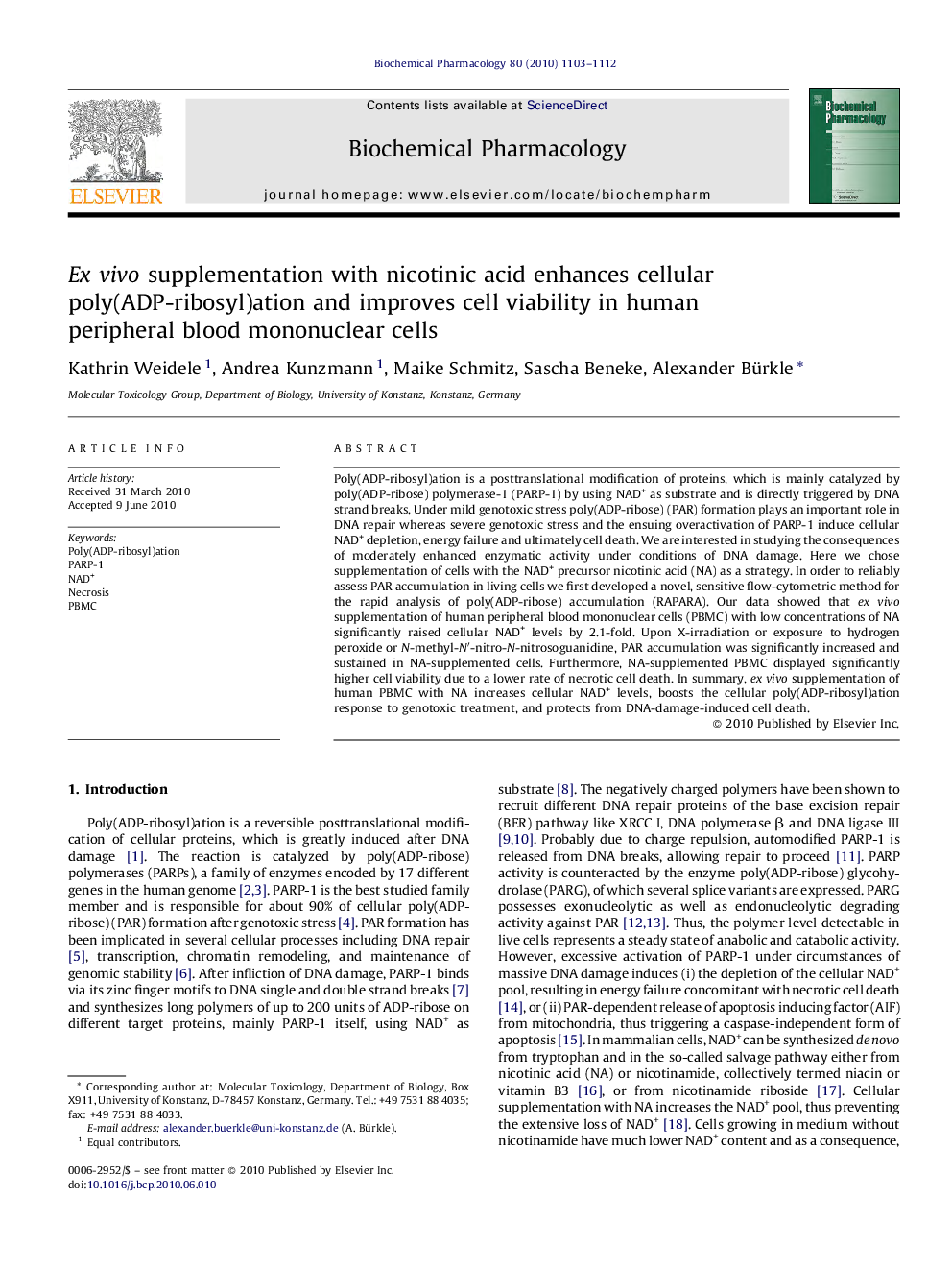| کد مقاله | کد نشریه | سال انتشار | مقاله انگلیسی | نسخه تمام متن |
|---|---|---|---|---|
| 2513357 | 1118408 | 2010 | 10 صفحه PDF | دانلود رایگان |

Poly(ADP-ribosyl)ation is a posttranslational modification of proteins, which is mainly catalyzed by poly(ADP-ribose) polymerase-1 (PARP-1) by using NAD+ as substrate and is directly triggered by DNA strand breaks. Under mild genotoxic stress poly(ADP-ribose) (PAR) formation plays an important role in DNA repair whereas severe genotoxic stress and the ensuing overactivation of PARP-1 induce cellular NAD+ depletion, energy failure and ultimately cell death. We are interested in studying the consequences of moderately enhanced enzymatic activity under conditions of DNA damage. Here we chose supplementation of cells with the NAD+ precursor nicotinic acid (NA) as a strategy. In order to reliably assess PAR accumulation in living cells we first developed a novel, sensitive flow-cytometric method for the rapid analysis of poly(ADP-ribose) accumulation (RAPARA). Our data showed that ex vivo supplementation of human peripheral blood mononuclear cells (PBMC) with low concentrations of NA significantly raised cellular NAD+ levels by 2.1-fold. Upon X-irradiation or exposure to hydrogen peroxide or N-methyl-N′-nitro-N-nitrosoguanidine, PAR accumulation was significantly increased and sustained in NA-supplemented cells. Furthermore, NA-supplemented PBMC displayed significantly higher cell viability due to a lower rate of necrotic cell death. In summary, ex vivo supplementation of human PBMC with NA increases cellular NAD+ levels, boosts the cellular poly(ADP-ribosyl)ation response to genotoxic treatment, and protects from DNA-damage-induced cell death.
Figure optionsDownload as PowerPoint slide
Journal: Biochemical Pharmacology - Volume 80, Issue 7, 1 October 2010, Pages 1103–1112